|
Part
II: Hollywood’s End of Days
- Wars
One of the most oft-used scenarios of the downfall of
civilisation was the next World War, which Hollywood
believed would bring about a nuclear holocaust that
would wipe out most of mankind. Most recently, “The
Road” (2009) hinted at such a prospect, though
like the book, is noticeably vague about the details.
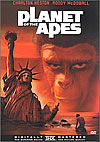 The
prospect of World War III first became very real during
the 1950s, fuelled by the tension between the United
States and the communist bloc- especially with the Soviet
Union’s nuclear bomb test, the Communist Revolution
in China in 1949 and the Korean War. It was during this
era that Hollywood films began to depict a post-apocalyptic
world after its destruction by nuclear weapons. Among
the first were “Captive Women” (1952), the
story of three tribes in a new primitive society fighting
in New York City long after a nuclear war, and “The
World, The Flesh and the Devil” (1959), the story
of a miner who escapes from a cave-in to discover the
world ravaged by a nuclear holocaust. The
prospect of World War III first became very real during
the 1950s, fuelled by the tension between the United
States and the communist bloc- especially with the Soviet
Union’s nuclear bomb test, the Communist Revolution
in China in 1949 and the Korean War. It was during this
era that Hollywood films began to depict a post-apocalyptic
world after its destruction by nuclear weapons. Among
the first were “Captive Women” (1952), the
story of three tribes in a new primitive society fighting
in New York City long after a nuclear war, and “The
World, The Flesh and the Devil” (1959), the story
of a miner who escapes from a cave-in to discover the
world ravaged by a nuclear holocaust.
Over the 1960s and 1970s, films such as the Stanley
Kubrick’s Dr Strangelove (1964), Fail Safe (1964),
and Planet of the Apes (1968) and its sequels continued
to perpetuate the real possibility of WWIII- though
Hollywood began to tap more specifically on people’s
apprehensions over the Vietnam War in the mid-1970s.
One of the most popular films in the 1980s to use the
prospect of WWIII was Kurt Russell’s Escape to
New York 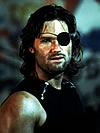 (1981)
set in a post-WWIII backdrop in 1997. While they did
not mention WWIII, human wars were also the backdrop
of Mel Gibson’s Mad Max and its two sequels (1980).
Hollywood continued its obsession with films featuring
a nuclear WWIII- which waned off after the fall of the
Soviet Union in 1991. (1981)
set in a post-WWIII backdrop in 1997. While they did
not mention WWIII, human wars were also the backdrop
of Mel Gibson’s Mad Max and its two sequels (1980).
Hollywood continued its obsession with films featuring
a nuclear WWIII- which waned off after the fall of the
Soviet Union in 1991.
The September 11, 2001 attacks never did revive fears
of a WWIII, primarily because of the united stance that
countries took against terrorism and the few countries
thought to support this beast. If anything, the concept
of WWIII morphed into a probable consequence of social
inequality and social unrest- the premise of Kurt Wimmer’s
sci-fi cult hit Equilibrium (2002) and most recently,
Denzel Washington’s The
Book of Eli (2010).
- Pandemics
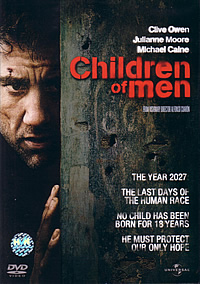 The
end of the world by way of plagues and pandemics is
a relatively new one- and really only became Hollywood’s
de facto mode of the apocalypse in the 2000s. Terry
Gilliam’s 12 Monkeys (1995) was one of the earlier
ones and depicted a world devastated by disease in which
a man is sent back from the future to collect information
about. The
end of the world by way of plagues and pandemics is
a relatively new one- and really only became Hollywood’s
de facto mode of the apocalypse in the 2000s. Terry
Gilliam’s 12 Monkeys (1995) was one of the earlier
ones and depicted a world devastated by disease in which
a man is sent back from the future to collect information
about.
The year 2002 saw two well-received pandemic themed
films- one, the critically acclaimed 28 Days Later (2002),
the gritty Danny Boyle film set in London; and the other,
the commercial hit Resident Evil (2002), based on the
popular videogame. It didn’t take Hollywood long
to wake up with the idea that the fears of SARS and
H1N1 only made the possibility of apocalypse by viruses
ever more real in the 21st century.
So began films like Aeon
Flux (2005), Children
of Men (2006), I
Am Legend (2007), 28
Weeks Later (2007)-the sequel to 28 Days Later,
Doomsday
(2008), Carriers (2009) and the most recent, Daybreakers
(2009) where a pandemic turns the world’s
population into vampires, and humans a much-depleted
food resource.
-
Alien invasions
Where we acknowledged it or not, we somehow knew
that we weren’t alone in this vast universe- and
thus our 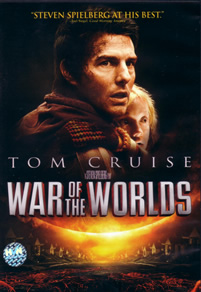 fears
that something somewhere out there may not be friendly.
Films like War of the Worlds (1953) and Invasion of
the Body Snatchers (1956) tapped into these fears and
remain as relevant and frightening today as they were
before- seeing as how both have since been remade, War
of the Worlds by Steven Spielberg in 2005 and The Invasion
by in 2007. fears
that something somewhere out there may not be friendly.
Films like War of the Worlds (1953) and Invasion of
the Body Snatchers (1956) tapped into these fears and
remain as relevant and frightening today as they were
before- seeing as how both have since been remade, War
of the Worlds by Steven Spielberg in 2005 and The Invasion
by in 2007.
The stereotypical view was that aliens were hostile
and wanted to decimate our planet for their domination,
and films such as Independence Day (1996), Titan A.E.
(1996), Signs and even Michael Bay’s big, loud
and bombastic Transformers
(2007) reinforced this. Last year however, South
African director Neill Blomkamp turned these fears on
their head with the sci-fi classic District
9 (2009) by parlaying the tensions between humans
and aliens into a clever and thought-provoking allegory
on discrimination in his home country.
- Ecological catastrophe
Since the 1960s, Hollywood somehow knew that the world
could end with some form of environmental destruction.
B-movie maestro Roger Corman’s The Last Woman
on Earth (1960) was one of the earliest, imaging what
would happen if the world’s oxygen levels suddenly
dropped precipitously. A slew of other films in the
1960s also dwelt on the effect of man’s flirtation
with technology (i.e. nuclear testing) on the environment,
resulting in catastrophe by solar radiation (Beyond
the Time Barrier, 1960) or the spiralling of the sun
towards Earth (The Day the Earth Caught Fire, 1964).
 The
1970s saw the well-received Logan’s Run (1975)
which was set against the backdrop of an ecological
disaster that forced mankind to live in enclosed domes.
But the rest of the ‘70s, ‘80s and ‘90s
saw throwaway disaster movies that failed to make their
mark with audiences- even the Kevin Costner expensive
bomb, Waterworld (1995), so named because its setting
is a waterlogged planet following the melting of the
polar ice caps. The
1970s saw the well-received Logan’s Run (1975)
which was set against the backdrop of an ecological
disaster that forced mankind to live in enclosed domes.
But the rest of the ‘70s, ‘80s and ‘90s
saw throwaway disaster movies that failed to make their
mark with audiences- even the Kevin Costner expensive
bomb, Waterworld (1995), so named because its setting
is a waterlogged planet following the melting of the
polar ice caps.
Roland Emmerich, the master of the modern day disaster
movie genre, rebooted the death by ecological disaster
notion with the 2004 hit The Day After Tomorrow, which
he upped with his latest box-office winner 2012
(2009). Animation giant Pixar also took a stab at
the genre with their charming Wall
E (2008) set in a future where mankind has abandoned
Earth after massive pollution has made it incapable
of sustaining life.
Asia too in their demonstration of CGI prowess decided
to make use of the ecological disaster bandwagon- with
Japan’s The
Sinking of Japan (2006), Korea’s Haeundae
(2009) and Thailand’s 2022 Tsunami (2009).
- Cybernetic revolt
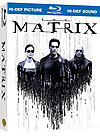 What
better way to express mankind’s ambivalence with
technology than cybernetic revolt, a doomsday scenario
where artificial intelligence (AIs) would one day decide
that humans are a threat and therefore attempt to enslave
them or exterminate them completely. James Cameron’s
Terminator (1984), which has since spawned three sequels,
was one of the definitive movies about the man versus
machine battle. What
better way to express mankind’s ambivalence with
technology than cybernetic revolt, a doomsday scenario
where artificial intelligence (AIs) would one day decide
that humans are a threat and therefore attempt to enslave
them or exterminate them completely. James Cameron’s
Terminator (1984), which has since spawned three sequels,
was one of the definitive movies about the man versus
machine battle.
Another such franchise was The Wachowski Brothers’
The Matrix (1999) trilogy, which spawned a cultural
revolution with its dystopian view of mankind’s
control by sentient machines where humans were grown
in pods and farmed as a bioelectricity and thermal energy
source. (Remember the books dissecting the world of
the Matrix and its meaning for the human race?)
Will Smith’s I,
Robot (2004), adapted from the Isaac Aminov book,
was another such piece of cybernetic revolt fiction.
So too the Jude Law- Gwyneth Paltrow movie Sky
Captain and the World of Tomorrow (2004) and most
recently, the animated film 9
(2009) where the corruption of machines causes the
obliteration of mankind.
If You Missed Part One of THE END IS NIGH >
|
 The
prospect of World War III first became very real during
the 1950s, fuelled by the tension between the United
States and the communist bloc- especially with the Soviet
Union’s nuclear bomb test, the Communist Revolution
in China in 1949 and the Korean War. It was during this
era that Hollywood films began to depict a post-apocalyptic
world after its destruction by nuclear weapons. Among
the first were “Captive Women” (1952), the
story of three tribes in a new primitive society fighting
in New York City long after a nuclear war, and “The
World, The Flesh and the Devil” (1959), the story
of a miner who escapes from a cave-in to discover the
world ravaged by a nuclear holocaust.
The
prospect of World War III first became very real during
the 1950s, fuelled by the tension between the United
States and the communist bloc- especially with the Soviet
Union’s nuclear bomb test, the Communist Revolution
in China in 1949 and the Korean War. It was during this
era that Hollywood films began to depict a post-apocalyptic
world after its destruction by nuclear weapons. Among
the first were “Captive Women” (1952), the
story of three tribes in a new primitive society fighting
in New York City long after a nuclear war, and “The
World, The Flesh and the Devil” (1959), the story
of a miner who escapes from a cave-in to discover the
world ravaged by a nuclear holocaust.  (1981)
set in a post-WWIII backdrop in 1997. While they did
not mention WWIII, human wars were also the backdrop
of Mel Gibson’s Mad Max and its two sequels (1980).
Hollywood continued its obsession with films featuring
a nuclear WWIII- which waned off after the fall of the
Soviet Union in 1991.
(1981)
set in a post-WWIII backdrop in 1997. While they did
not mention WWIII, human wars were also the backdrop
of Mel Gibson’s Mad Max and its two sequels (1980).
Hollywood continued its obsession with films featuring
a nuclear WWIII- which waned off after the fall of the
Soviet Union in 1991. 


 What
better way to express mankind’s ambivalence with
technology than cybernetic revolt, a doomsday scenario
where artificial intelligence (AIs) would one day decide
that humans are a threat and therefore attempt to enslave
them or exterminate them completely. James Cameron’s
Terminator (1984), which has since spawned three sequels,
was one of the definitive movies about the man versus
machine battle.
What
better way to express mankind’s ambivalence with
technology than cybernetic revolt, a doomsday scenario
where artificial intelligence (AIs) would one day decide
that humans are a threat and therefore attempt to enslave
them or exterminate them completely. James Cameron’s
Terminator (1984), which has since spawned three sequels,
was one of the definitive movies about the man versus
machine battle.